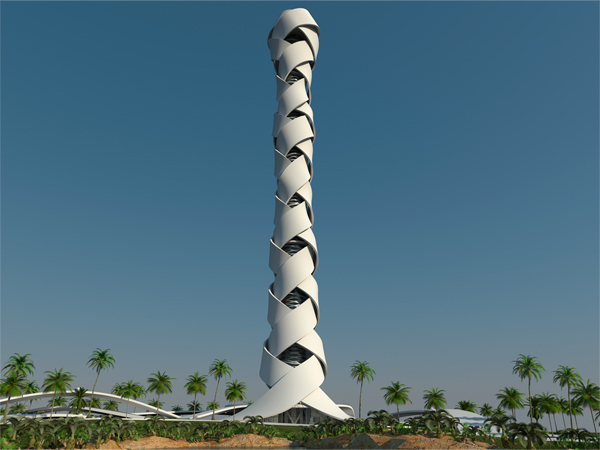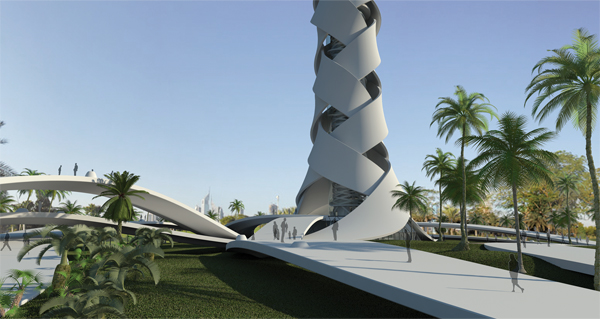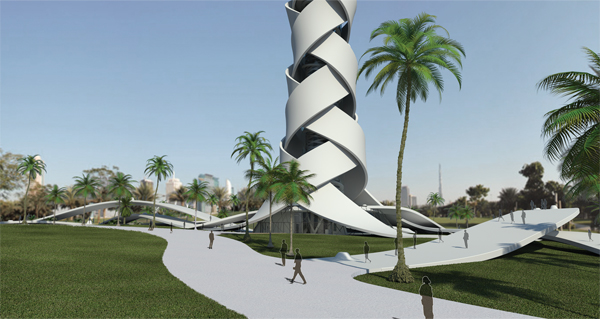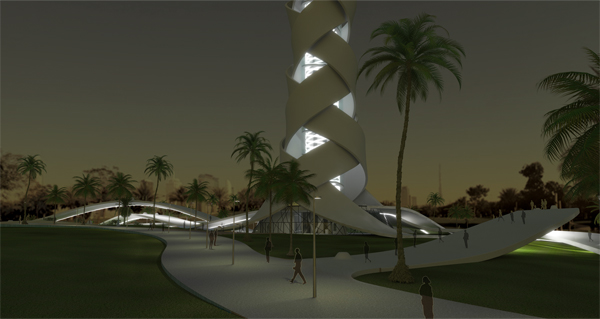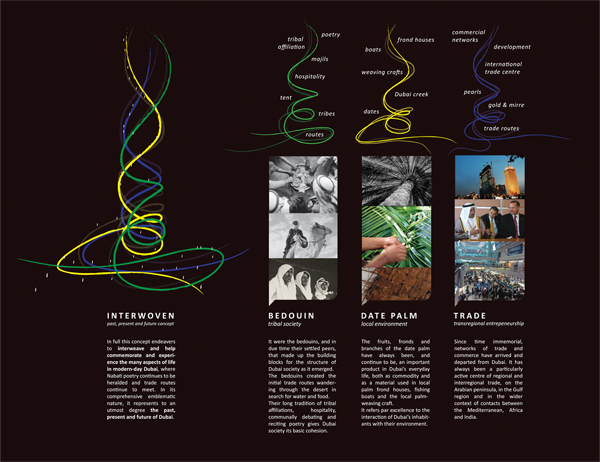Designed in cooperation between Giuseppe Farris and Stefan Schöning, the proposed structure aims to capture several aspects of Arab culture: its tribal society and the transregional entrepreneurship. The building’s appearance refers to the date palm which, along with fruits and fronds continue to be an important product in Dubai’s everyday life, both as a commodity and as a material used in local palm frond houses, fishing boats and the local palm-weaving craft. The twining maze of the building’s exterior simultaneously represents the network of trade and commerce routes that have, through history, arrived and departed from Dubai. The exterior also commemorates the tribal legacy and reminds of the dynamic maze of tribal affiliations that has given Dubai’s society its basic cohesion.
Functionally, the building’s interior continues this celebration of the tribal cornerstone of Dubai identity, and it is designed to promote its rich values and its relevance for the 21st century. More in particular, visitors can enter via different routes, each time discovering different aspects of Dubai’s tribal culture and history. At ground level, it is an open structure, hence symbolizing the hospitality of the Dubai people and inviting all to enter. Visitors may find at different levels outside and inside the structure different kinds of majlis.

